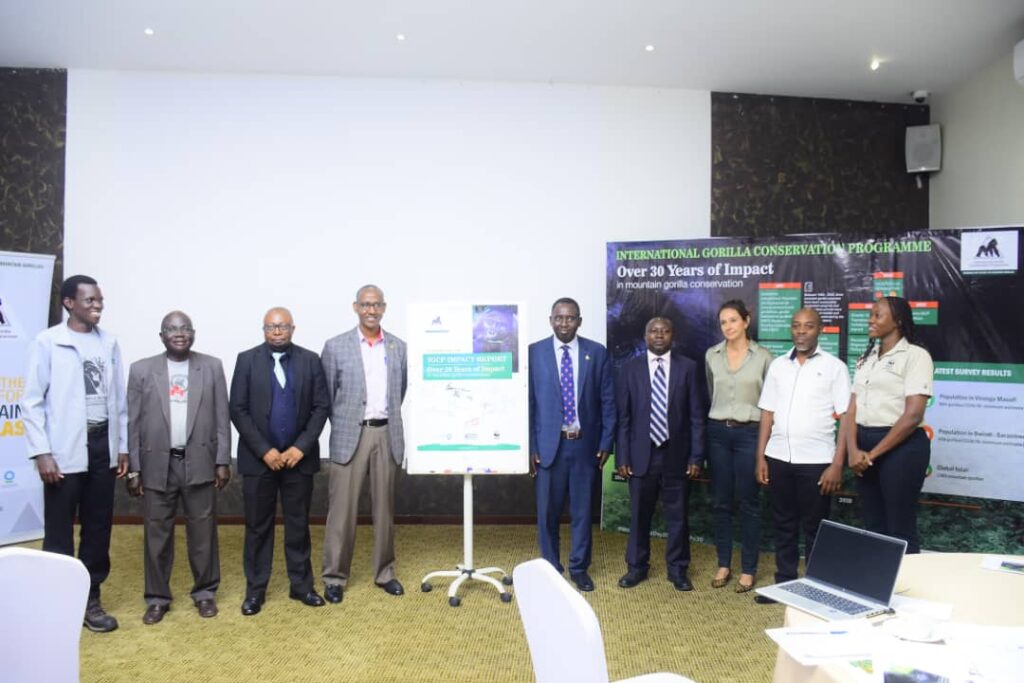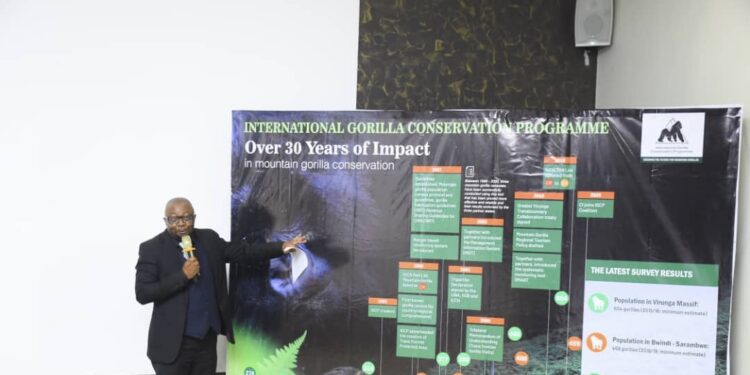A new report titled “Over 30 Years of Impact in Mountain Gorilla Conservation,” released in celebration of World Gorilla Day, highlights the significant role that sustained efforts and partnerships have played in the recovery of the mountain gorilla population.
The report, issued by the International Gorilla Conservation Programme (IGCP), outlines decades of achievements made through collaboration with the three mountain gorilla range countries: the Democratic Republic of Congo, Rwanda, and Uganda.
““Collaboration is a key factor in the success of mountain gorilla conservation. The guidance and engagement of the three countries’ governments together with various conservation partners in the region have helped to make all mountain gorilla conservation efforts become a reality. As a result, the population is currently not only stable but also increasing,” reads part of the report.
It adds, “These efforts have contributed to an increase in the mountain gorilla population from about 600 individuals, less than three decades ago to 1,063 individuals globally according to the 2019 Bwindi-Sarambwe mountain gorilla census.”
This remarkable recovery has inspired renewed global conservation efforts, instilling hope for the long-term survival of these gentle giants.
However, the report also cautions that “although mountain gorillas are the only great apes whose population is increasing, they remain a conservation-dependent species.”
Speaking at the report’s launch, IGCP Director Wellard Makambo emphasized the organization’s three-decade commitment to innovating and adapting strategies for mountain gorilla conservation, both at the population level and across transboundary landscapes.
These efforts have also focused on building the capacity of individuals and institutions working on conservation across borders.
“This collaboration between the three countries that are home to the world’s wild mountain gorillas has generated strong social and political support for conservation, increased tourism revenue-sharing with communities living near parks, strengthened local livelihoods, and improved the management of mountain gorilla habitats,” Makambo added.
Over the last 30 years, IGCP, in partnership with protected area authorities and other organizations, has conducted mountain gorilla censuses and various ecological surveys. These efforts, from planning and coordination to the publication of results, have helped conservationists monitor gorilla populations, understand their ecology, and identify the threats they face, leading to more targeted and effective conservation strategies.

Local communities have also benefited directly from mountain gorilla conservation efforts. By forging genuine partnerships, they have become stewards of mountain gorilla conservation.
Despite these achievements, Makambo acknowledged that challenges such as poaching, habitat loss, political instability, disease, and infrastructure development continue to threaten the long-term survival of mountain gorillas and the people living alongside them.
Cath Lawson, Senior Programme Manager for Eastern Africa at Fauna & Flora, said, “Mountain gorillas are a conservation success story because of IGCP’s effectiveness as a transboundary facilitator, its focus on people-centered approaches, and its ability to mobilize the global community to respond collectively.”
Mountain Gorilla Range
Mountain gorillas are found exclusively in high-altitude forests, typically at elevations between 2,500 and 4,000 meters.
According to the report, more than 500,000 people live near mountain gorilla parks, many of whom depend on subsistence and commercial agriculture, including potato, pyrethrum, tea, and coffee farming.
Human-wildlife conflict, particularly crop raiding by buffaloes, elephants, and occasionally gorillas, remains a challenge across the entire mountain gorilla range.
Recent surveys indicate there are 459 gorillas in the Bwindi-Sarambwe area (2018/19 minimum estimate) and 604 in the Virunga Massif (2015/16 minimum estimate), with the global population of mountain gorillas now estimated at 1,063 individuals.
The International Gorilla Conservation Programme (IGCP) is a coalition of three leading nature conservation organizations—Conservation International, Fauna & Flora, and WWF—working in close collaboration with local, regional, and international partners across the mountain gorilla range.









